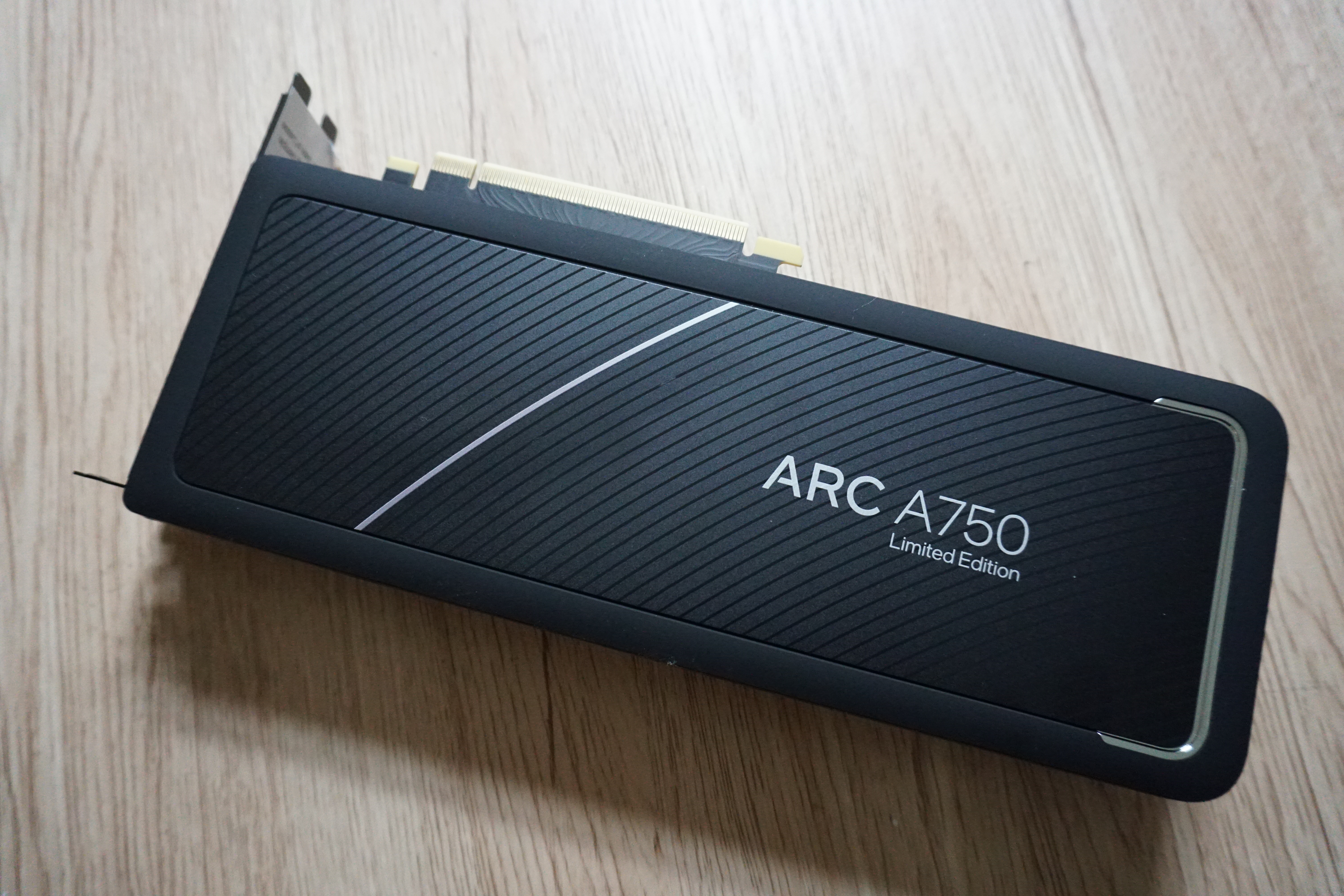Intel’s debut consumer graphics cards, the Arc A770 and Arc A750, launched as a mixed bag last summer. On one hand, Arc GPUs delivered exceptional performance in modern DirectX 12 games and ray tracing out of the box, but on the other, performance in traditional DX9 and DX11 games faltered against the competition. In the months since, however, Intel’s software engineers have been diligently patching the biggest holes, squashing bugs and rolling out drivers that turbocharged performance in DX9 games like Counter-Strike and League of Legends.
Today, Intel is announcing a big boost in DirectX 11 gaming performance on Arc graphics cards, and rolling out a new “GPU Busy” metric as well as its first enthusiast performance-measurement tool for gamers, dubbed PresentMon Beta.
Intel Arc: Now 19% faster on DX11
In a briefing with press, Intel Fellow and graphics guru Tom Petersen proudly stated that “our engineers completely rearchitected our DX11 stack,” resulting in an average performance uplift of roughly 19 percent versus the Arc A750’s launch drivers, when the GPU is paired with an Intel Core i5 CPU.

Intel
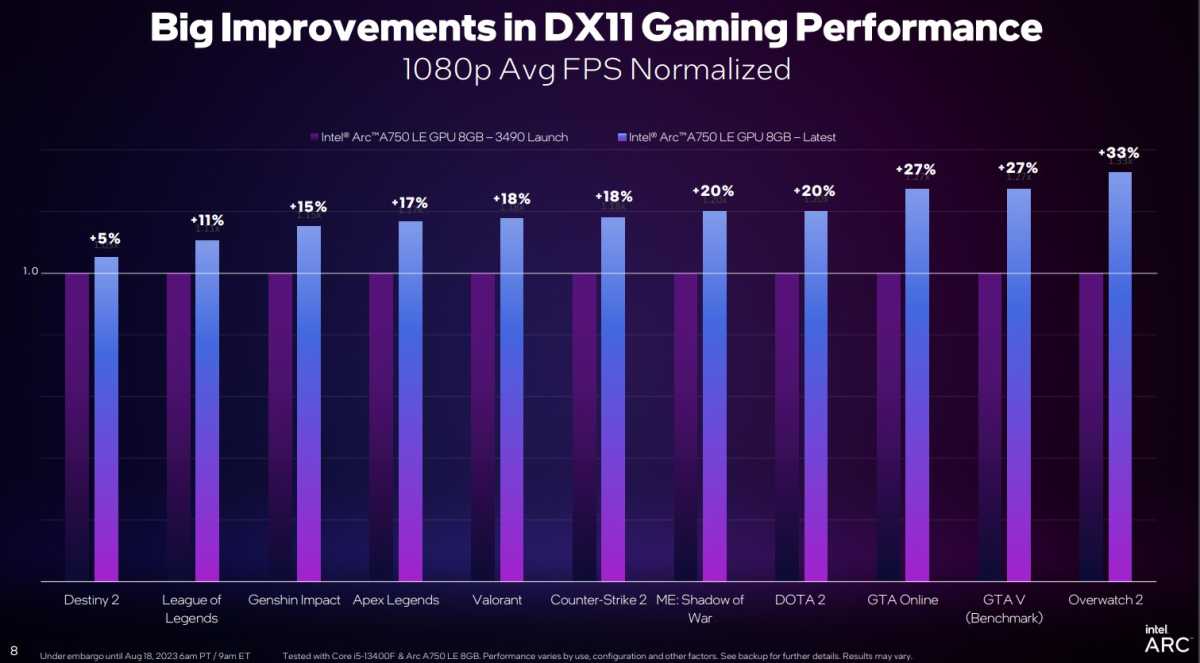
Intel
As you can see in the charts above, the actual performance gains vary from game to game, but in general, DX11 games now get tens of frames more performance. In the games Intel tested, the uplift ranged from 5 percent faster performance in Destiny 2, all the way up to 33 percent in Overwatch 2.
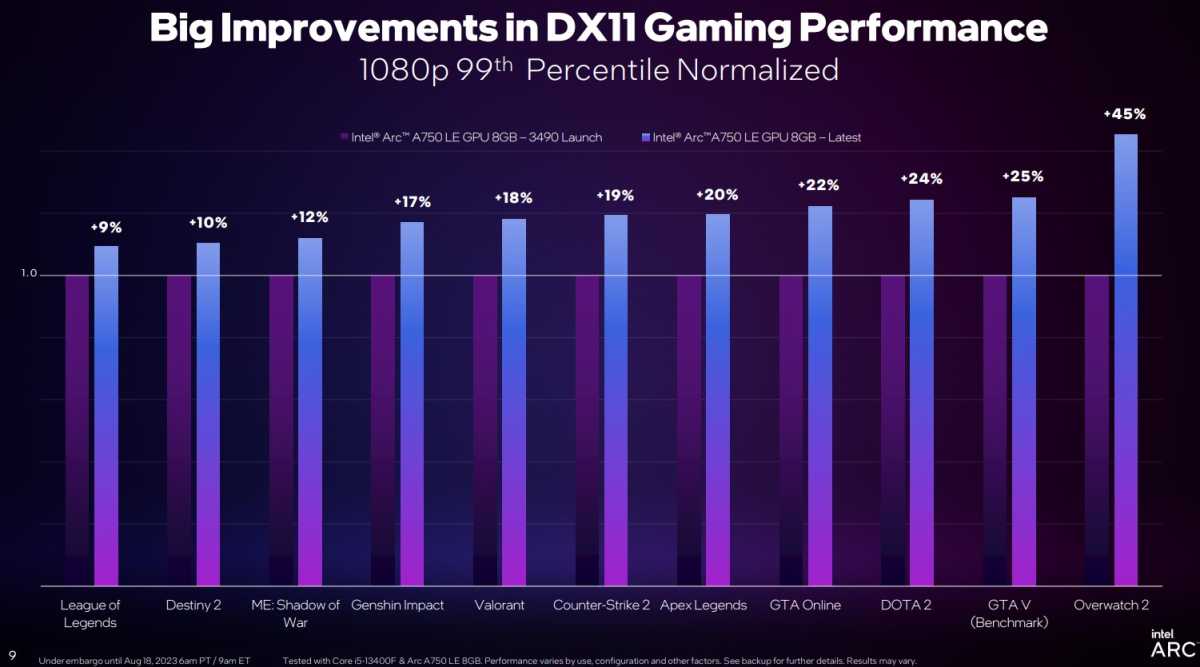
In addition to faster overall frame rates, the 99th percentile frame rate is also an average of 20 percent improved in DX11 games now — meaning you get a much smoother experience overall.
Intel
Why the gulf? Petersen explained that Intel’s driver acted as a sort of translator for DirectX API calls, sending instructions in a language that Arc GPUs understand. Intel’s team worked hard to reduce the DX11 driver overhead previously found in Arc drivers, but more CPU-bound games still needed to wait for your processor to do its work first.
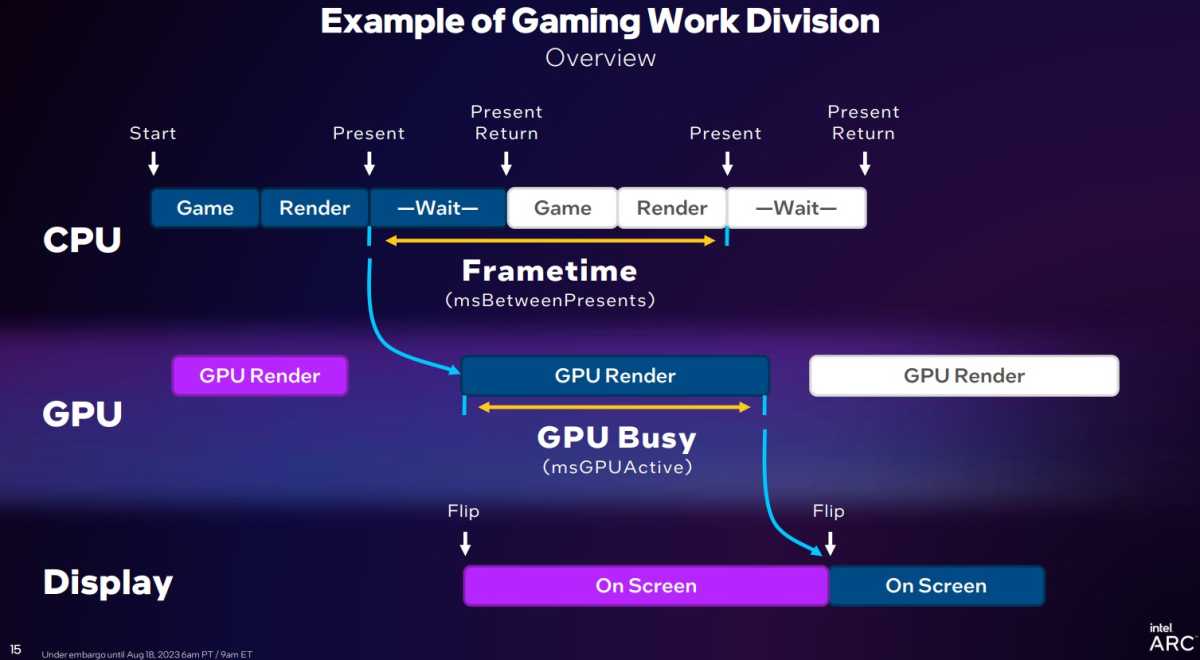
Intel
Petersen then introduced a new GPU metric, one Intel calls “GPU busy.” In a given displayed frame, the GPU is only busy for a portion of the action — the rest of it is divvied up by your CPU, driver overhead, and display. By measuring both the actual time it took a frame to render, and how long of that your GPU is busy, you can get a sense of how much “other overhead” is affecting your gaming performance.
The two Overwatch 2 performance screenshots below showcase both the hard work Intel has put into its DX11 drivers as well as the sort of insights GPU Busy can provide. The blue line shows how long each individual frame took to render; the yellow line shows how long the GPU was busy in that frame. The idea with frame time charts is you want to see the lines as smooth and flat as possible.
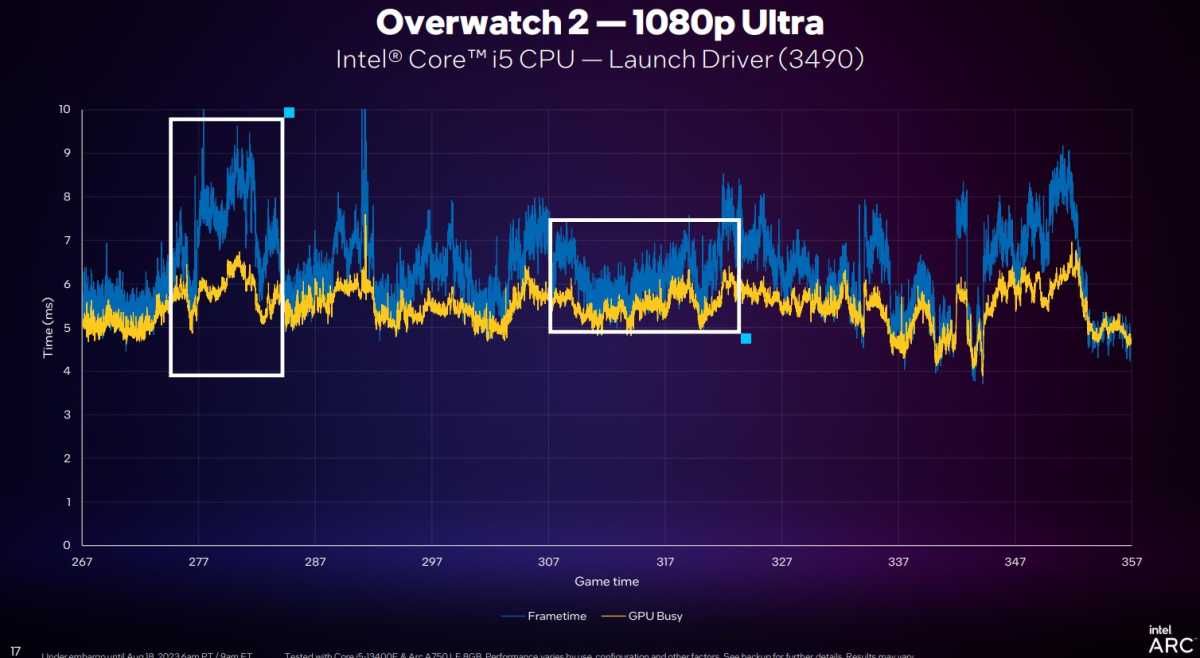
Intel

Intel
As you can see, that wasn’t the case for OW2 when using the Arc A750’s launch drivers; the blue lines bounce everywhere, delivering an inconsistent experience. Now, using the latest Intel drivers with rearchitected DX11 code, the game runs much more smoothly — even though the yellow “GPU busy” line remains at roughly 5 to 6 milliseconds with both drivers. Intel managed to fine-tune its drivers to cut back on the wild frame time spikes caused by other aspects of your system.
The game runs much better now, which we could measure using frame capture tools before, but the new GPU Busy metric gives us insight into why. Armed with that info, you can be better informed about whether your performance in a given game would improve with a CPU or GPU upgrade. If the GPU Busy time closely corresponds with overall frame times, either the game is perfectly balanced or it could benefit from a graphics card upgrade. Handy!
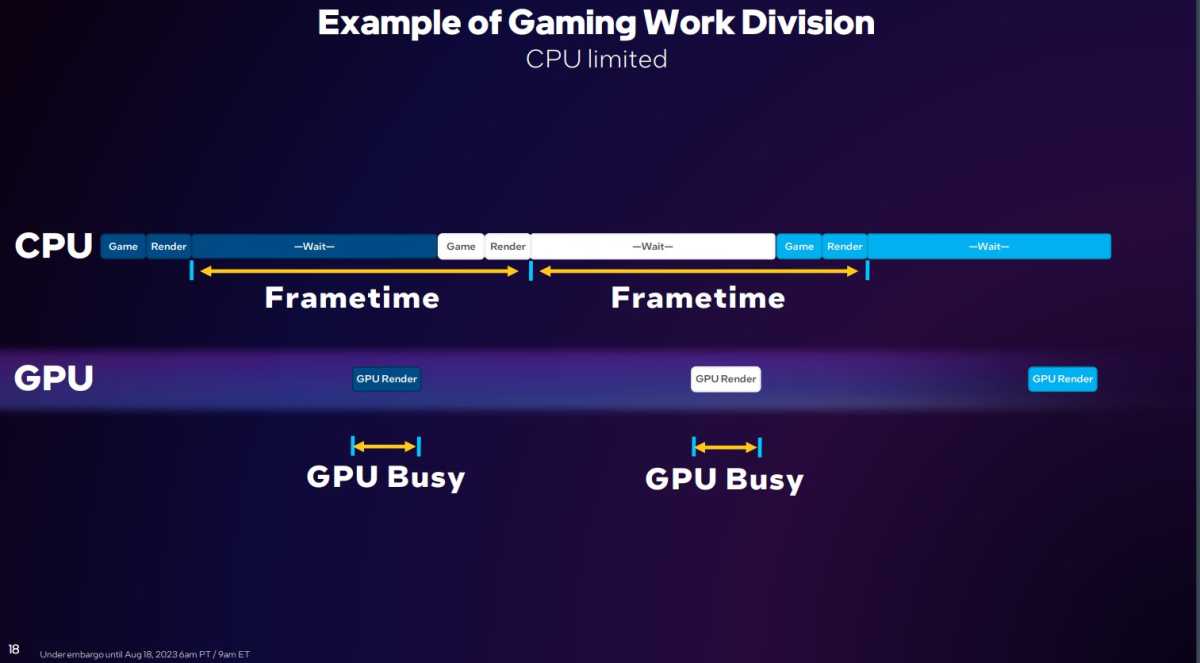
An example of when a frame or game is CPU limited rather than GPU limited.
Intel
PresentMon beta
But how do you measure GPU Busy times? None of the traditional frame measurement tools like Nvidia Frameview, AMD’s OCAT, or MSI Afterburner support the new metric. Enter Intel’s PresentMon Beta software.
Here’s a thing nerds might know: All of those aforementioned frame measurement tools rely on a technology called “PresentMon” to measure when new frames are presented to your display. Here’s what nerds might not know: PresentMon is an open-source Intel technology. Yes, really, even though Intel doesn’t offer a nerdy frame measurement tool for Arc gamers.
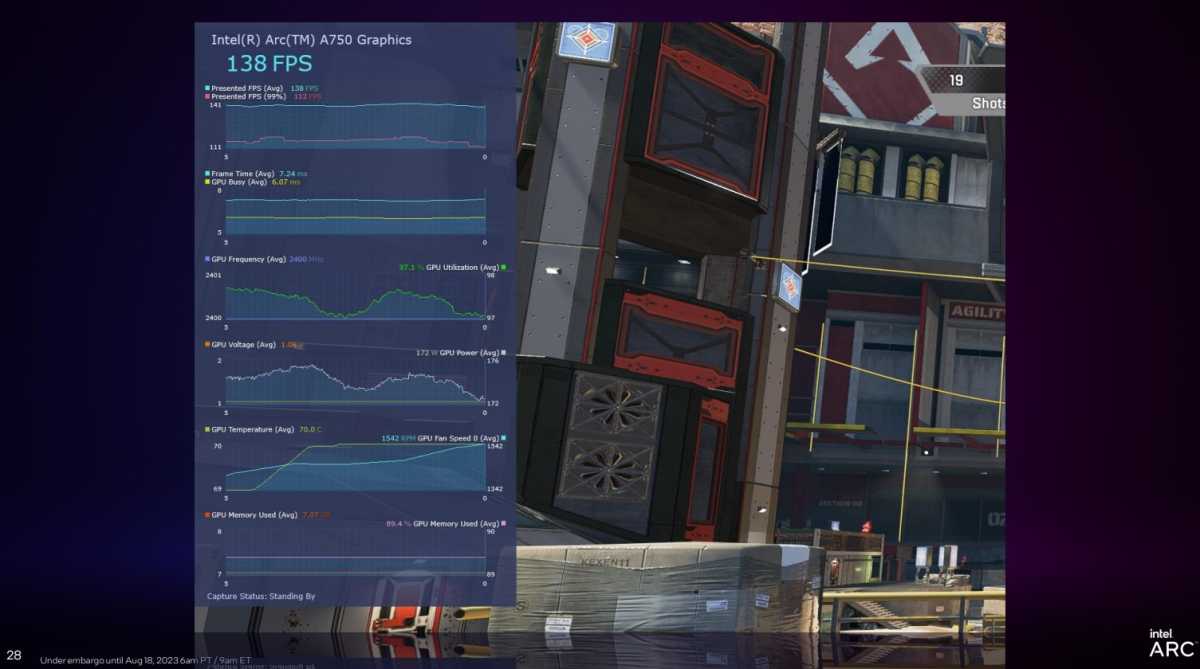
Intel’s PresentMon Beta overlay.
Intel
That ends today. Intel’s slick-looking PresentMon Beta app (available in both overlay and windowed form) delivers all the usual graphs, data, and measurements you expect to see in a modern GPU measurement tool — memory use, frame rates and times, voltages, frequencies, and more — in addition to the new GPU Busy metric.
You can configure the app to show numerical readouts or active, running charts of your chosen metrics, where you can also batch chosen metrics together in a single chart — perfect for having a graph in the corner of your screen showing both frame times and GPU Busy times, for example.
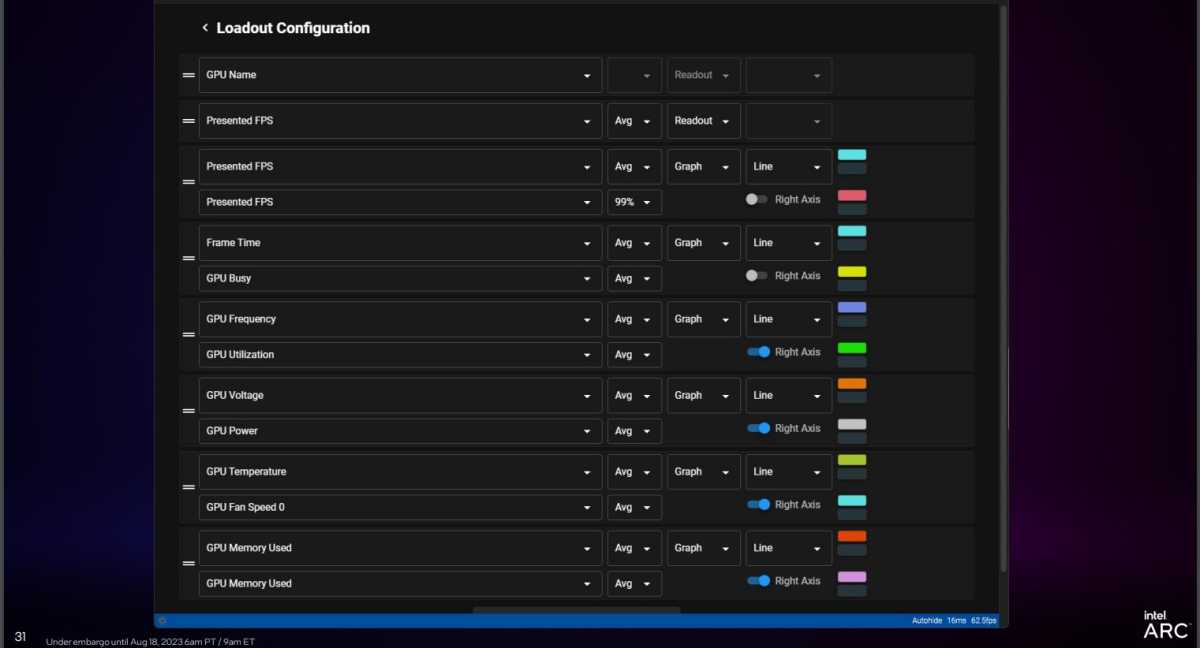
Intel
Intel isn’t yanking the rug out of the traditional PresentMon tools, so tools like Frameview and Afterburner will continue to work just fine. But it’s also making the new PresentMon beta open-source, and better yet, it’s just as hardware agnostic as the original, meaning it works with Intel, GeForce, and Radeon graphics cards alike.
Giggity. That gets my geeky synapses firing! The PresentMon Beta looks deeply useful for hardcore enthusiasts and hardware reviewers like yours truly.
But the bigger takeaway from today is that Intel is listening, and Arc graphics cards today run tangibly better than they did at launch (as our six-month Intel Arc performance check-in showed). Now, DX9 and DX11 games play considerably faster and smoother on Arc then they did at launch — making the $250 Intel Arc A750, already our favorite budget GPU for ray tracing, an even better option than before. Intel’s debut Arc graphics cards launched in a rough state, but there’s no reason to be scared of them now.
Just make sure your PC supports PCIe Resizable BAR. Intel’s graphics cards were designed to run on fairly modern systems and performance can get really sketchy if you slap them into a much older rig.
Further reading: Are Intel Arc GPU drivers still buggy, or getting better? We test it out.


